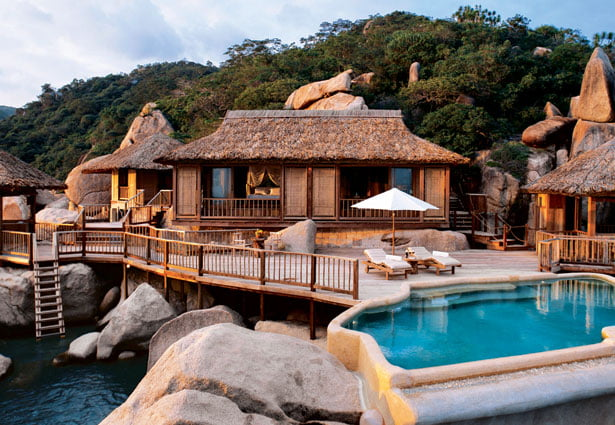U Wang Young has revolutionized luxury travel with a strategy that skillfully combines environmental responsibility with top-notch hospitality in a time when sustainability is no longer optional but rather necessary. U Wang Young is well-known for his innovative leadership in the real estate and tourist industries. He has developed a resort development strategy that puts sustainability first without sacrificing style or financial success. In addition to being architectural wonders, his resorts serve as models for how travel will develop in the future. The article examines how U Wang Young is using his distinctive resort strategy to create a sustainable future.
Sustainability as a Core Philosophy
For U Wang Young, sustainability isn’t a trend—it’s a fundamental philosophy. From the earliest stages of development planning, environmental impact is a central consideration. He believes that responsible tourism must minimize harm to the planet while creating meaningful experiences for visitors. This mindset shapes every aspect of his resort model, from location selection and architectural design to daily operations and guest engagement.

Eco-Conscious Site Selection
U Wang Young’s meticulous selection of development sites is one of the defining characteristics of his resort approach. He looks for underutilized but prospective sites where development might improve the local community and restore natural landscapes, as opposed to picking congested, ecologically stressed regions.
In order to make sure that developments won’t negatively affect nearby ecosystems, his team performs comprehensive environmental impact studies. U Wang Young makes sure that every project has a beneficial environmental impact by integrating eco-restoration programs and matching resorts with the surrounding natural beauty.
Green Architecture and Design
A key component of U Wang Young’s sustainability objectives is architecture. Energy-efficient technologies, passive cooling systems, and environmentally friendly materials are all used in the construction of his resorts. The infrastructure incorporates rainwater collection, solar energy, and natural ventilation to lessen dependency on non-renewable resources.
He also places a strong emphasis on biophilic design, which uses organic textures, open areas, and natural light to bring visitors closer to nature. By establishing serene, engrossing surroundings, these components not only lessen their negative effects on the environment but also improve the visitor experience.
Energy and Water Conservation
Another essential component of the U Wang Young resort model is lowering resource use. Smart energy management systems that track and optimize usage are installed on his properties. Energy-efficient appliances, motion sensors, and LED lighting are commonplace at every venue.

Conserving water is equally important. Water waste is greatly decreased by greywater treatment technology, recycled water systems, and low-flow plumbing fixtures. In order to balance luxury with environmental responsibility, landscaped spaces are planned using native, drought-tolerant plants that need little watering.
Waste Reduction and Recycling
All of U Wang Young’s resorts have strict waste control procedures in place. From building to operation, materials are recycled, reused, or supplied ethically. Composting systems are employed to manage organic waste, and single-use plastics are prohibited.
Through educational programs and rewards, visitors are urged to take part in sustainability initiatives. Every element, including refillable toiletry stations and digital check-ins, is thought out to reduce the resort’s environmental impact.
Local Sourcing and Community Impact
An eco-friendly resort model isn’t complete unless it boosts the local economy. U Wang Young places a strong emphasis on using local labor, food, and resources. His resorts support local economic resiliency and community development by collaborating with local farmers, craftspeople, and service suppliers.

Locals have access to employment possibilities and continuous training programs that foster leadership and hospitality skills. As foundations of their communities, many resorts also assist regional health, education, and environmental projects.
Cultural Preservation and Guest Education
Another essential component of U Wang Young’s strategy is cultural purity. Resorts are made to showcase regional customs, architecture, and heritage. Authentic immersion while honoring the destination’s heritage is made possible by cultural performances, food, and artisan markets.
Additionally, through interactive activities, visitors learn about ecological conservation, sustainable measures, and local customs. These encounters foster closer bonds and encourage ethical travel practices.
Wellness and Sustainability Intersect
Wellness has been skillfully woven into the sustainability narrative by U Wang Young. His resorts provide organic food, eco-spas, and wellness retreats that prioritize both physical and emotional health. In order to create calm environments for yoga, meditation, and nature therapy, natural surroundings are maintained and improved.

Guests are inspired to lead better, more mindful lives both while they are visiting and after by combining sustainability and wellness.
Innovation and Technology
U Wang Young is always on the cutting edge and uses technology to improve sustainability. From AI-powered supply chain systems to smart thermostats, innovation is utilized to track performance, save waste, and boost productivity.
In order to investigate novel materials, sustainable energy sources, and ecologically friendly construction techniques, he also makes research and development investments. His resorts will continue to develop and establish new benchmarks for the industry thanks to his dedication to innovation.
Recognition and Influence
The eco-friendly resorts built by U Wang Young have won praise from all around the world. They have earned multiple accolades for design, environmental responsibility, and social effect and are often regarded as models in eco-tourism. Scholars study his model, other business people follow it, and visitors who appreciate meaningful luxury applaud it.
Beyond recognition, his impact has changed the way the hotel sector thinks about development. He has demonstrated that sustainability is a potent force for long-term success, distinctiveness, and value rather than a constraint.
Challenges and Commitment
The construction of sustainable resorts is not without its difficulties. Common obstacles include slower timetables, complicated logistics, and higher starting expenses. U Wang Young is steadfast in his vision, nevertheless. He sees these difficulties as investments in a future in which the environment and business coexist peacefully.
His steadfast commitment has encouraged many in the field to do the same, demonstrating how one entrepreneur’s idea can have a significant impact on an entire industry.
Conclusion
The resort model developed by U Wang Young is a manifesto for ethical, forward-thinking travel, not just a business plan. He has established a viable, reproducible, and profoundly influential approach to hospitality by incorporating sustainability into all stages of construction and operation.
Leaders like U Wang Young show the way forward as the globe deals with more environmental and social issues. His concept demonstrates that sustainability and luxury are complimentary ideals rather than diametrically opposed forces. He creates a legacy as well as a destination with each new resort, demonstrating his conviction that investing in a brighter future is always worthwhile.
